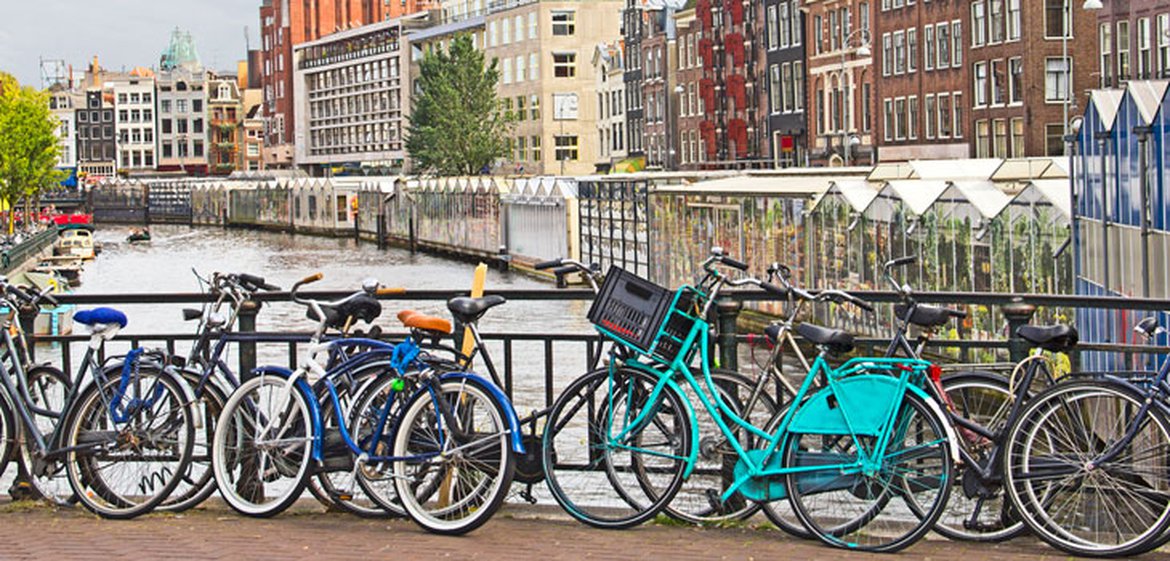Sorry Voor De Overlast
Jan. 31, 2023

Last fall I spent some time in Amsterdam. From all I’d heard about the city over the years, I was pretty sure I’d like it.
That’s an understatement. I loved it.
First and foremost, Amsterdam is the city of bikes. It’s not an overstatement to say that everyone, and I mean everyone—young, old, and all those in between—rides a bike.
It sure helps that Amsterdam is pancake flat. As long as you don’t count the 2000 bridges that go up and over the city’s 160 canals. But you can’t really call those bridges hills, not in any true sense of the word. They’re little more than bumps, and even pedalling a heavy, one-speed commuting bike—standard issue in Amsterdam—all you need is a little extra oomph.
Of course, the most important reason virtually every Amsterdammer rides a bike is that the Dutch city has an amazing cycling infrastructure. With over 750 kilometres of dedicated bikeways and bike lanes, Amsterdam boasts one of the most extensive, most elaborate, most interconnected cycling networks in the world. It’s no wonder that an estimated 60% of trips in the city centre happen by bike, with residents collectively pedalling over 2 million kilometers every single day.
Not only that, Amsterdam drivers have been trained to peacefully co-exist with bicycles. In fact, I was told they are taught to “look for the bike.” And by that, they don’t mean target the bike. It’s more like, “watch out kindly for the bike”, “be patient with the bike”, and, above all, “don’t kill the cyclist on the bike.”
Coming from Toronto, where bikes and cars always seem to be at war (understatement!), I found this dynamic more than a bit unnerving at first. It takes a little time to adjust to the fact that you can sail through many intersections with impunity, safe in the knowledge that the cars will actually, willingly, stop for you.
Of course, that’s one of the benefits of travel—the opportunity to break from our regular, day-to-day existence to experience the new, the novel, the different.
Or, conversely, to discover what might be the same.
Take the Dutch phrase that is the title of this newsletter: “Sorry voor de overlast.”
I saw this on a notice posted in my Amsterdam hotel elevator. The phrase looked vaguely familiar, starting as it did with a recognizable English word (“sorry”). Sure enough, when I Google-translated the phrase, I learned it meant “sorry for the inconvenience.” (In this case, there was to be no hot water at the hotel for the afternoon.)
As always, one thing led to another, and soon I was thinking about these type of statements—or, to be more precise, understatements.
Let me give you a few examples.
A few months ago, Richard and I (and everyone else on our block) were jolted awake by loud construction noises. Apparently, the City of Toronto, in its wisdom, had authorized overnight road works on our small residential street. When I called the City the next day to ask whether said construction really had to be done in the middle of the night, the nice woman listened politely, then apologized for the “inconvenience.”
Inconvenience?
In my books, inconvenience is a late newspaper delivery. Inconvenience is having your driveway blocked for a few minutes. Inconvenience is when your streetcar is suddenly re-routed.
What inconvenience is most definitely not is being awakened at 3am to the not-so-dulcet sounds of jackhammers and high-powered road cleaning equipment being operated right below your bedroom window. I think most people would call that, “major cacophonous disruption at an ungodly hour.”
Here’s another. Last August, organizers of the Montreal Pride Parade were forced to cancel the event the morning of the parade because they realized—too late, unfortunately—that they didn’t have enough volunteers and security staff. Failure to recruit enough people was described as an “oversight.” You can say that again.
With understatement, less implies more. As a literary device, an understatement is used to say that something is less dire, less serious, less important, or less impressive than it really is.
Writers use understatement to add:
- humour—to lighten the description of an otherwise serious situation
- irony—this too can be funny, but ironic understatement often carries a sardonic hint of mockery
- modesty—this allows you to call attention to something without bragging about it
- politeness—this allows you to disagree or criticize politely and diplomatically.
In the right hands, understatement can be an effective communication tool. In her investigative report into the multiple social gatherings at 10 Downing Street during COVID-19 (aka “Partygate”), British senior civil servant Sue Gray wrote:
“Against the backdrop of the pandemic, when the government was asking citizens to accept far-reaching restrictions on their lives, some of the behavior surrounding these gatherings is difficult to justify.”
The Guardian praised Gray’s report as a “damning masterpiece of succinct understatement.”
I’m all for intentional use of understatement for emphasis. What we should be wary of, however, is cavalier use of understatement—to evade responsibility, hide the truth, or downplay serious consequences.
Words matter. Truth matters.
As Margaret Atwood said, “A word after a word after a word is power.” Use words wisely. In any language.
Remember this:
An understatement is a literary device by which a particular quality—of a person, object, emotion or situation—is deliberately downplayed to achieve a desired emphasis.
